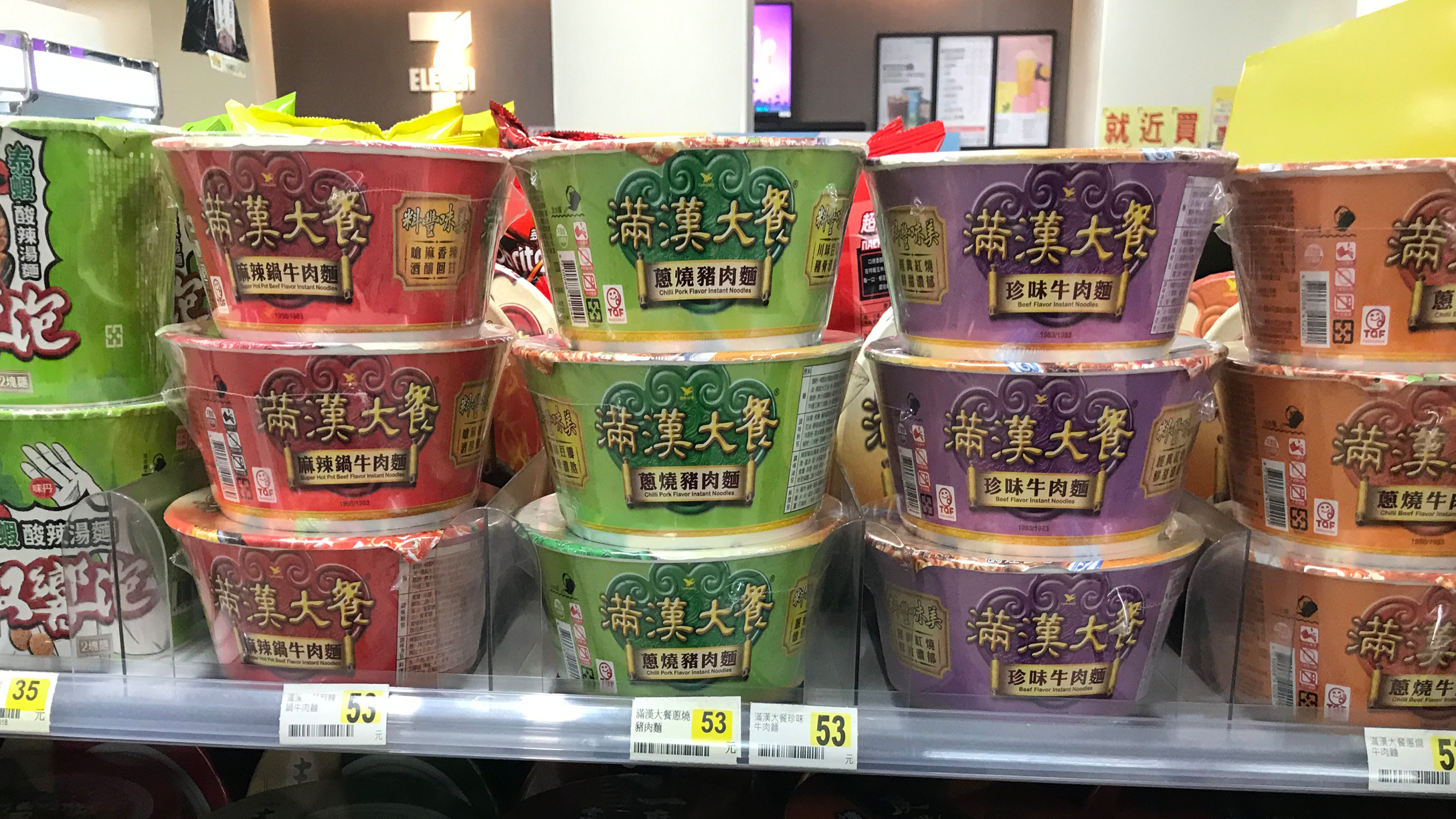With much of the world under lockdown, it seems as though everyone is eating a good deal of instant food these days—like instant noodles or canned food. Or if not, they’re baking bread.
Taiwan isn’t under lockdown, having managed to avoid the worst of COVID-19 so far through contact tracing, quarantines, and government measures to increase the production of medical supplies. If lockdowns were ever to take place here, however, instant food in Taiwan tends to be quite good! Eating food from convenience stores such as 7/11 may feel like eating zombie food, but it’s far more than just palatable. 7/11 food perhaps illuminates the horizons of the possible for instant food.
While watching the effects of the COVID-19 pandemic on the rest of the world, I have been relatively insulated from its effects in Taiwan so far. This has made me wish not only that my friends in other parts of the world could have access to, say, Taiwan’s universal healthcare system, but also to the wonders of Taiwan 7/11 instant food.
Without further ado, here is an introduction to the best 7/11 foods!
1) Instant, microwaveable curry: There are three types of microwaveable curry available from 7/11 and I’m afraid I don’t actually understand what the difference is between the three, apart from differences in how the sauce tastes. This is Japanese-style curry, not Indian-style curry. I believe instant curry was one of the earlier 7/11 microwaveable foods.
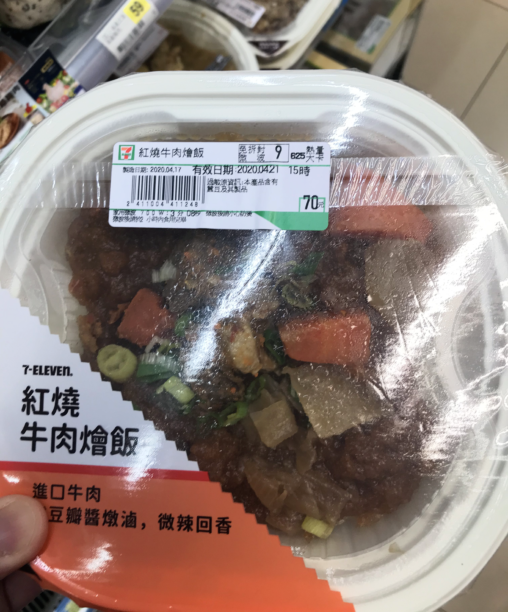
2) Mapo tofu and rice is among the cheapest of 7/11’s instant meals, though normally you can’t find mapo tofu without going to a restaurant. Though it’s only mildly spicy, when I’m done I always find myself drinking the sauce to try and get some more spicy flavor out of it. Since I’m constantly lethargic, I always seem to be on the look-out for spicy food in order to try and keep awake. Basically the same exact thing as their instant curries, just with mapo tofu instead.
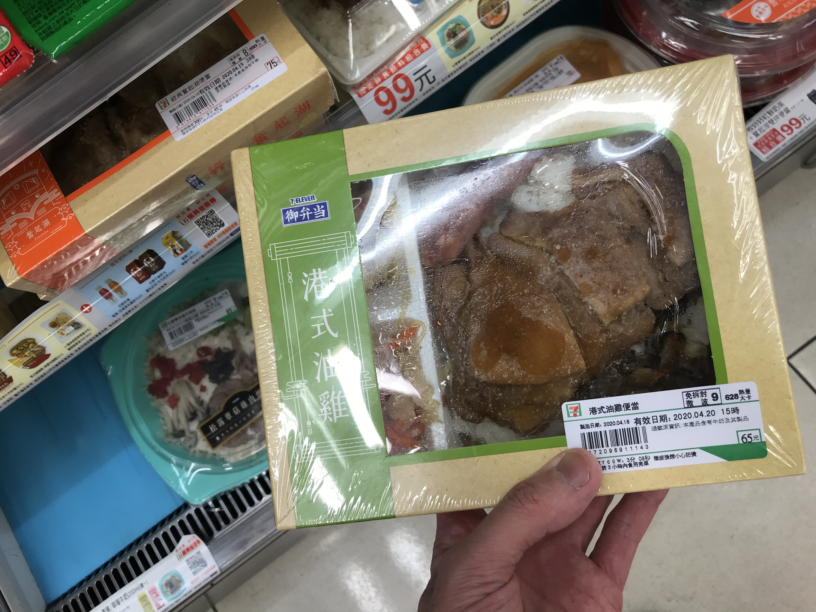
3) Hong Kong-style biandang: Biandang refers to a lunchbox, usually including rice, meat, and some vegetables. The pork chop lunchbox is what I usually get, since despite being labeled as Hong Kong-style, it includes a Taiwanese-style sausage—always a favorite, since they tend to be quite juicy. I’m allergic to most of the Taiwanese-style biandang offered by 7/11, since they use sesame oil.
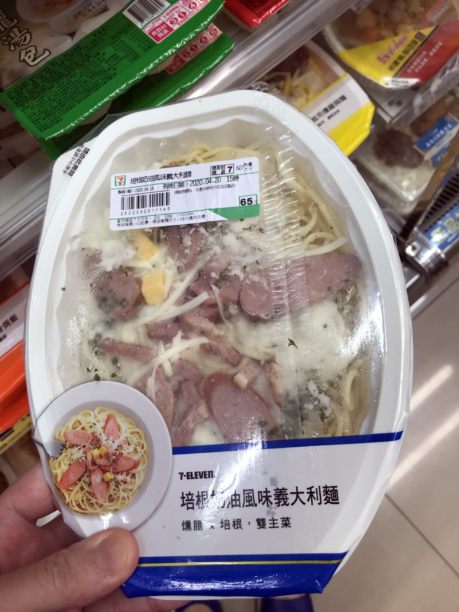
4) Penne pasta/Spaghetti with ham and cheese: My favorite of 7/11’s noodle offerings, the texture of the pasta is surprisingly good, particularly if you microwave it for longer than the recommended time so that the texture of the cheese is uneven, with some bits harder than others. Often something I get on the way back home after a night of drinking.
5) Penne pasta with spicy chicken: This was how the penne pasta in #4 was originally branded. It hasn’t been available for years, but I used to eat it just for the texture of the pasta. It uses the same sauce as #2, so I would also drink the sauce after I was done eating it, to savor the spiciness. Taiwanese spicy food is generally not very spicy, so I am usually trying to get what little spiciness I can out of it.
6) Instant dumplings: Microwaveable instant dumplings, with real meat! A basic, small bite, good for when you’re looking for something that won’t make you too full but will take the edge off. I tend to drink the remainder of the soy sauce from the carton once I’m done eating… Okay, I guess drinking the sauce is something I do for a lot of 7/11 foods.
7) Instant gyoza: The same as above, except as gyoza. Once in a while, 7/11 will do a promotion deal offering Ramen Arashi-brand instant gyoza—Ramen Arashi is a global Japanese food chain found in Taiwan that I suspect may not actually be Japanese.
I’m not sure what the difference is from the regular instant gyoza except that the Ramen Arashi version features spicy sauce. Family Mart, another convenience store chain, offers a Korean kimchi gyoza which is also delicious, though their instant meals pale in comparison with 7/11.
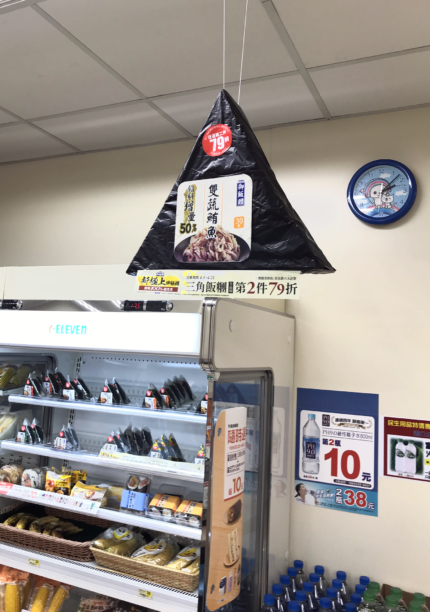
8) Refrigerator inarizushi: 7/11 offers a number of onigiri and California roll offerings, but they taste very vividly of preservatives. The inarizushi does as well, but the tofu flavor covers up the preservative taste slightly.
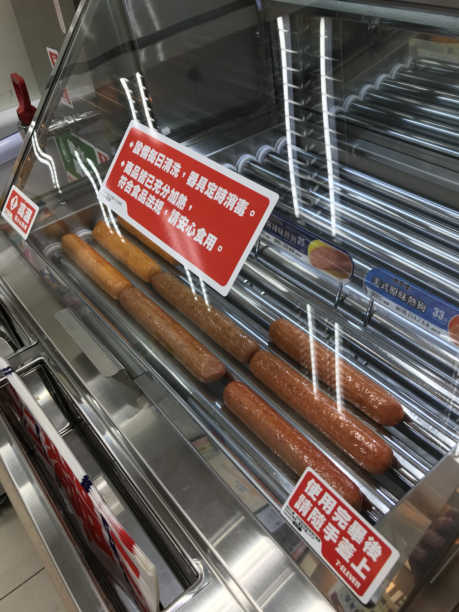
9) Microwaveable hot dog: 7/11 actually sells hot dogs with a hot dog cooker, along with tea eggs, oden, and fried sweet potato. However, I prefer the microwaveable hot dog, which is offered only during the summer. It tastes more artificial, particularly with regard to the bun, but it’s less oily, and the Japanese-style mayo is nice.
10) “Manchurian-Han Meal” (滿漢大餐): An instant noodle brand sold at 7/11. It contains real meat, something I find quite remarkable for instant noodles! And it is probably the spiciest thing offered by 7/11. I believe that this product represents the next frontier of instant noodles. I have never quite understood the name, which strikes me as vaguely embodying greater Han chauvinism.
Many of 7/11’s food offerings are a recombination of existing items. This echoes 7/11’s role in the urban landscape throughout Taiwan: cookie-cutter urban convenience everywhere you find it. It can be sterilizing. Eventually all that is unique or historic about local places in Taiwan could be replaced by this cookie-cutter urban convenience. And so, though I’ve long since been fixated on the many wonders of Taiwan’s 7/11s, since moving to Wanhua—Taipei’s oldest district—I’ve mostly tried to eat local food, for the past year. Nowadays I only eat 7/11 food if I really have a craving for it.
Still, that’s precisely what’s so seductive about 7/11, that it offers such possibilities on the basis of a limited set of options, and for relatively cheap: every item on this list costs less than $3 USD. It makes you realize how much more could be out there. I think of it like capitalism, maybe, in that it has brought the productive capacity to feed the world into existence, but that productive capacity has been used to make the wealthy wealthier, rather than to benefit the many.

